Menu
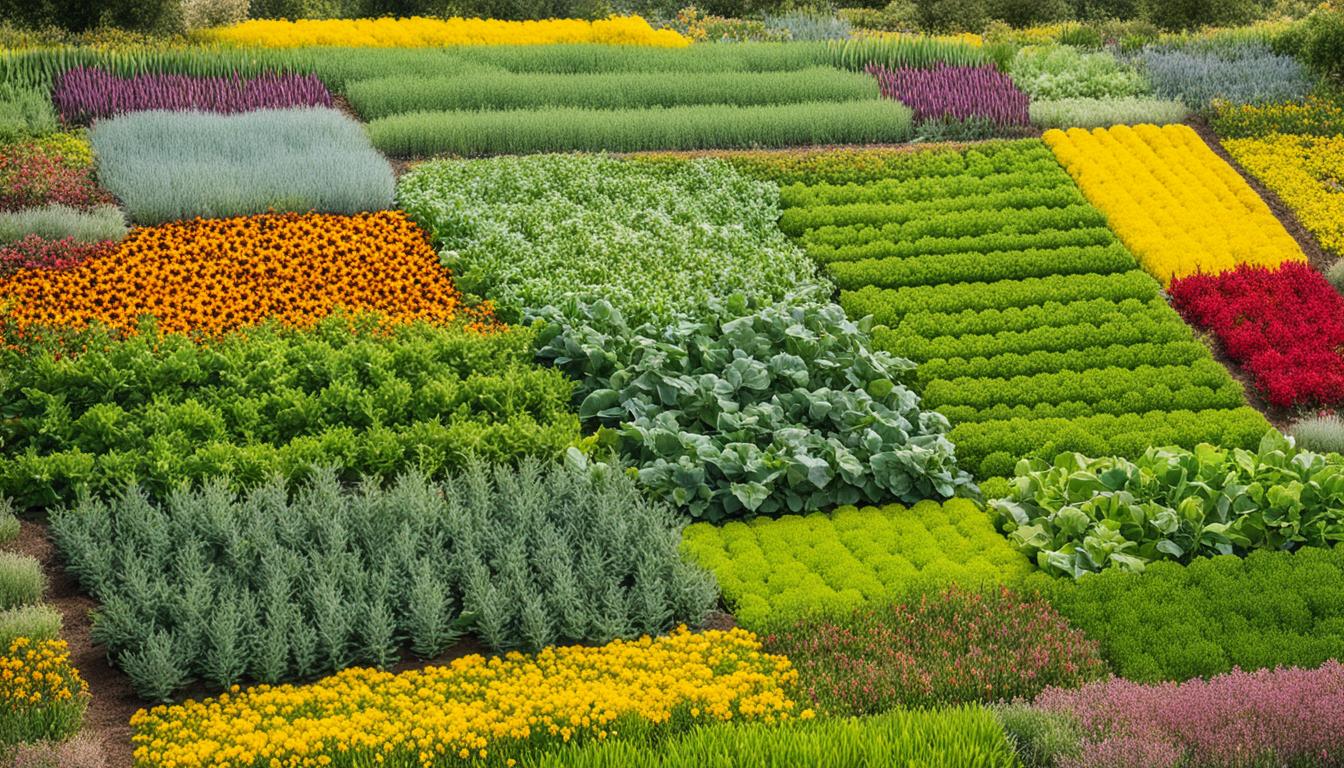
Walking in a meadow, I see life everywhere. Each blade of grass and butterfly shows how farming can support diversity. Biodiversity is essential for life on Earth, with over 8.7 million species living here. But, as we lose places like the tallgrass prairie, we see how important farming with nature is.
Big farms have destroyed many grasslands. This has greatly affected our world. Now, we must save the soil to keep all life forms going. Monarch butterflies, for example, have fallen by 70 percent because of our farming ways.
The Amazon rainforest could teach us a lot. It’s losing trees fast because of farming. Every year, an area the size of the UK disappears. This is a clear sign we must do better. Farming that works with the environment, not against it, is key. This type of farming can help us keep our planet full of life for the future.
Biodiversity in farming is key for strong agroecosystems, keeping them safe from environmental changes. Its role in making our food supply stronger is very important. The mix of genes within and among species helps farms survive and thrive. This mix gives life to many traits, like look, and hidden ones, such as fighting off stress and diseases.
Scientists believe our planet hides 8.7 million life forms, showing how complex farming ecosystems truly are. This big family of species does important jobs like helping plants make seeds, keeping pests in check, and creating rich soil. Without them, successes like the 70% drop in monarch butterflies remind us why keeping farms diverse is essential.
In history, farming has always needed many different plants and animals. This need hasn’t changed. It began with our early ancestors who knew how to keep the land and its creatures in balance. But, the way we practice farming today is causing big troubles. Our drive for more land has destroyed many wild homes. This destruction, like turning grasslands into farms, is happening at a scary speed.
The heavy use of chemicals in farming also plays a big part in the loss of life. For instance, a popular weed killer has reduced the number of wild plants. It’s also making it hard for helpful bugs to survive. Another type of bug killer is hurting bees, making it tough for beehives to keep growing and working together. That teamwork is needed for lots of our food to get made. It’s clear we must change how we farm to save our food for tomorrow.
| Impact on Biodiversity | Data |
|---|---|
| Deforestation by Agriculture | 80% of global deforestation |
| Conversion of Grasslands to Cropland | 2.5 million acres between 2015-2016 |
| Pollinator Decline | 70% decline in monarch populations |
| Annual Deforestation | Over 100,000 square miles |
Genetic diversity is key to keeping crops and livestock healthy. It helps them fight diseases and grow well in different places. This variety also leads to a wide range of foods we can enjoy.

Genetic diversity is vital in agriculture. It makes crops tough against changing weather. A study showed about a third of crop yield changes comes from the climate. This proves we need plants that can handle various weather.
Livestock also gain a lot from being genetically diverse. Breeds that have adapted to certain areas are great for the planet. They’re often healthier and stronger.
| Component | Impact of Genetic Diversity | Reference |
|---|---|---|
| Crops | Enhanced resilience; ability to withstand climate variability | Ray et al., 2015 |
| Livestock | Better disease resistance; adaptation to local habitats | Leigh et al., 2019 |
Genetic diversity helps farms and nature cope with change. Losing genetic variety weakens species. But, places with many different genes, like kelp forests, do better against hard times.
This is true for both plants and animals. A mix of many genes helps agricultural systems deal with issues, like new diseases or weather changes.
People have changed how animals and plants mix their genes. By breaking up natural habitats and moving things around, we’ve shuffled genetic cards. This affects how strong and wild species are. So, keeping variety is crucial for farming to last into the future.
It’s key to use sustainable farming methods for better soil and more ecological diversity. To do this, using fewer chemicals and adding organic matter to soil is vital. Growing different types of crops together also helps a lot. This creates an ecosystem where everything works together well.
A study looked at farms using Ecosystem-based Adaptation (EbA) and usual methods. It found that EbA farms had more plants, insects, and other life. For instance, they found 167 kinds of insects on EbA farms, way more than the 87 on typical farms. EbA farms also had 68 unique plant and animal species, while the others only had 34. This doubling of species shows that EbA methods support more life.
Insects are extremely important for farming because they help plants grow and keep pests away. The study pointed out some great ways to encourage more insects and plants. These include planting in specific patterns, adding terraces for trees, growing different crops together, and using natural methods to fight diseases and pests. All of this can make a farm much more diverse.
This work is part of a big project to make farming in Guatemala more sustainable. It uses ideas like conservation farming to make the land better for plants and animals. This project helps keep the environment strong and diverse.
| Farm Management | Insect Specimens | Distinct Species |
|---|---|---|
| EbA-managed Farms | 167 | 68 |
| Conventional Farms | 87 | 34 |
Agroecology is a way of farming that helps the environment and the economy. It uses local and renewable resources, which are good for farmers. The main idea is to make farming work well together with nature. This creates a balanced and successful farm.
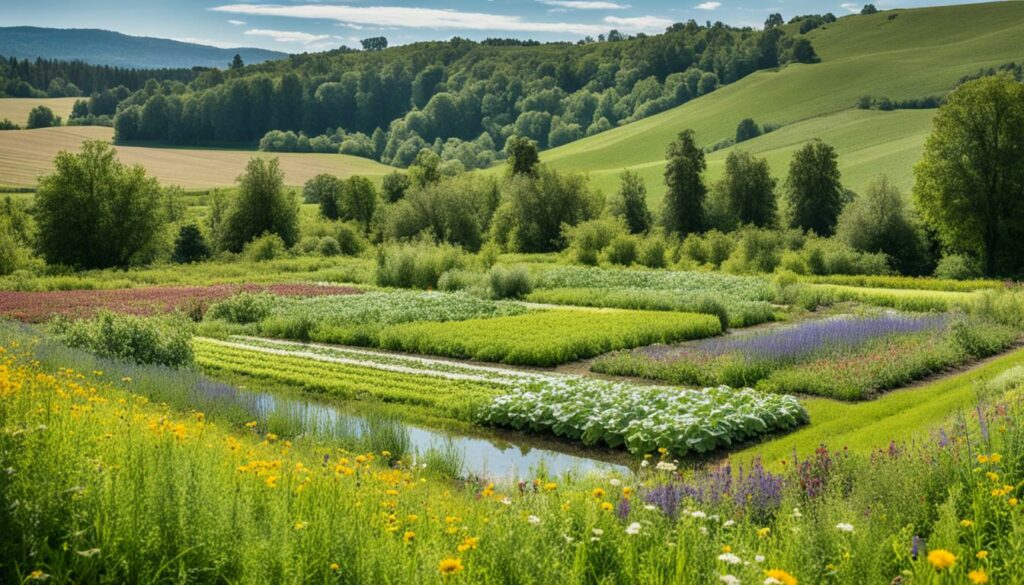
The High-Level Panel of Experts on Food Security and Nutrition (HLPE) set out 13 key points about agroecology in 2019. They showed how important it is for the future of farming. Now, many groups like governments and the UN support agroecology. They believe it can help with important goals, like ending hunger.
Agroecology also makes farming healthier for people and the planet. It cuts down on using harmful chemicals. By taking care of different plants and animals, it keeps the land healthy. This helps everyone have enough safe food and makes the farming life better.
One big part of agroecology is making sure everyone has a chance to farm well and fairly. It looks out for people who might not have many opportunities, like women and young farmers. By working together and keeping farming local, less food gets wasted. This makes the food system better for everyone.
Teaching agroecology helps make new jobs in the countryside, which is good for young people and women. It gives them the power to change farming for the better. This also helps women play a big part in farming, like saving seeds and growing food safely.
Moreover, agroecology fights climate change by using less energy and adapting to new weather patterns. By using different plants and animals together, farms can take in more carbon from the air. This helps the farm and the planet stay healthy.
Finally, agroecology supports groups of farmers who work together. These groups learn from each other and have a say in the rules about food. They make sure everyone can find good and healthy food. This kind of farming also helps make life better for farmers in poor areas.
Ecological diversity shapes how well we can farm. Soil microbes are essential in keeping nature’s balance. They help us have a wide variety of plants and animals around us.
Soil microbes make healthy soils. This is key for growing good crops. In the U.S., many acres of grass turned into farmland recently. This change shows the need for good soil care in new farming areas.
Agroecosystems, when balanced, help many species survive together. Growing different crops helps farms stand strong against problems like too much farming. Overusing herbicides has made many plants disappear. But we know that when we have more types of plants, our land does better. It’s good for both our food and our environment.
| Issue | Impact |
|---|---|
| Deforestation | 80% of global deforestation is due to agriculture. |
| Agricultural Expansion | Massive losses in biodiversity as habitats convert to farms. |
| Pollinator Decline | Monarch butterflies’ populations decreased by 70%. |
| Chemical Overuse | Reductions in plant diversity and impacts on beneficial insects. |
Conservation techniques are crucial for our farms. They help fight nitrogen pollution and other issues. In the Bay area, conservation farming has cut nitrogen pollution by 60%. This shows how these methods can help plants and improve soil.
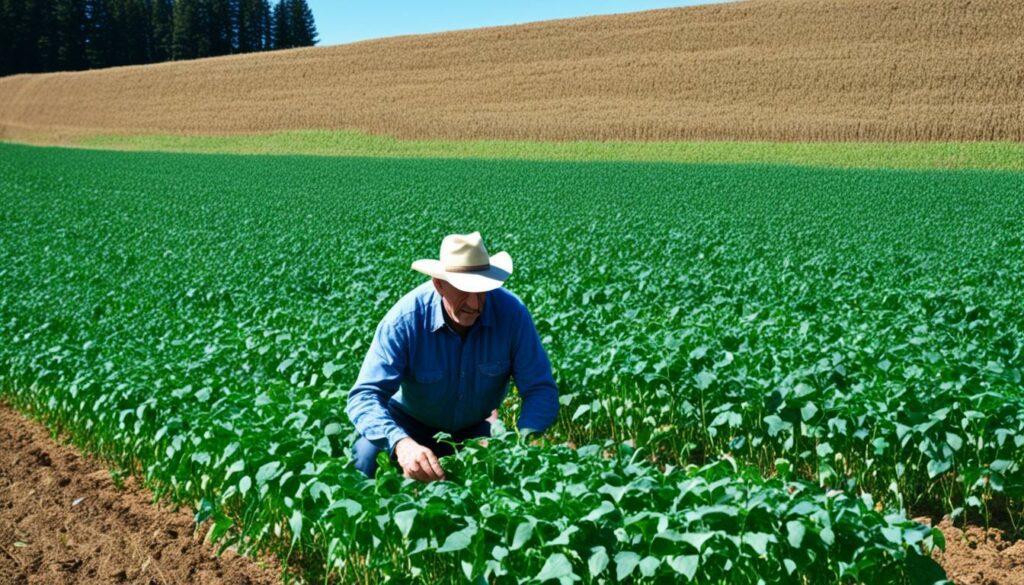
Forestry buffers are important for our environment. Each acre of forest buffer takes out 0.91 tons of carbon dioxide yearly. If 190,500 acres are used for buffers by 2025, we could remove 173,000 tons of carbon dioxide each year. This is like taking away the emissions of over 37,600 cars each year.
Switching to rotating pastures is also a good method. It can lower greenhouse gas emissions by 42%. It also cuts nitrogen by 63%, phosphorus by 67%, and sediment by 47%. Such big cuts show how useful conservation farming is for nature.
No-till farming is good for the soil as it disturbs it less, reducing erosion. It helps good bacteria grow, making our farms stronger. Integrating no-till into conservation farming is crucial for soil health.
Crop rotations help farms use less nutrients, reducing pests and weeds. This lowers the need for fertilisers, making soil better. It also strengthens farms against problems like flooding and erosion.
Streamside fencing and silvopasture also help the environment. They keep livestock away from water, cutting pollution and diseases. Silvopasture, especially, gives animals a better environment, reducing their stress and helping other plants and animals thrive.
Although not many farms use diverse methods yet, we can change this. By promoting conservation farming, we can create farms that are rich in nature and sustainable for the long run.
Crop rotation is key in making farming sustainable. It helps the soil stay healthy and fights off pests and diseases. By changing the crops in each field every year, farmers keep their land more fertile and productive.
Rotating crops makes the soil better. Each plant adds different nutrients to the land, which helps all the crops grow stronger. For example, legumes like alfalfa add nitrogen to the soil, and plants with deep roots, like rye, make the soil better. This mix of plants stops the soil from getting too hard, adds more organic matter, and keeps the moisture in the soil.
Research shows fields with different crops have more types of life in them than parks or forests. This means they work better than just having one type of plant. Using methods that don’t disturb the soil much and planting many different crops make the soil healthier and are good for the environment.
Changing the crops every year also helps with pests and diseases. It confuses the pests, so they can’t find their favourite food as easily. For example, planting something pests don’t like in a field they were in before can stop them from coming back later on.
Recent studies have shown that simply changing which crops grow where has a bigger impact on saving the crops from pests than just having a lot of different plants. This means we should think again about what we know on the topic.
Using crop rotation can also mean you don’t need to use as many chemicals to kill weeds or protect the plants. This way of farming is better for the planet and helps keep farming sustainable.
While crop rotation helps with pests, it has other big benefits too. It makes other good farming practices even better, like using manure on fields or not digging up the soil too much. All in all, crop rotation makes modern farming more successful and planet-friendly.
Creating wildlife homes on farms is key for more biodiversity in farming. They help various species by making space for them. This helps the farming and environment to get along well.
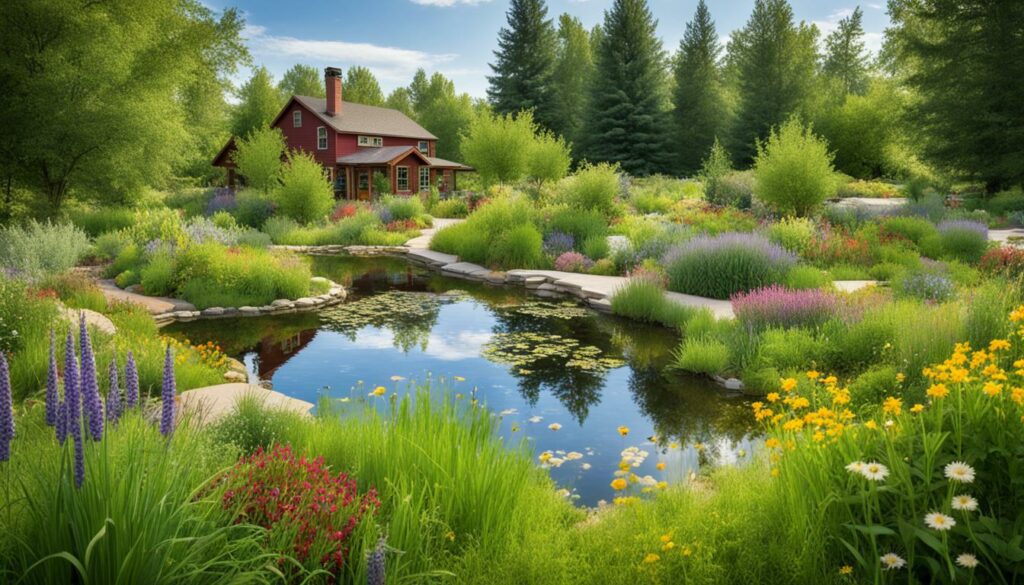
Hedgerows are very important for many animals. They act as paths between safe areas and give shelter. Keeping a 2-meter grassy border helps small creatures and birds. Studies show they improve crop growth by 8% by helping with pollination and pest control.
Adding ponds in fields helps dragonflies, frogs, and plants. Growing woodlands also makes more homes for animals and bugs. In Costa Rica, a plan to pay for protecting nature saw forests grow to cover 60%.
Adding different habitats like hedgerows and ponds all work together. This helps many plants and animals. It also makes farming better and more stable.
It’s vital to follow practices that help pollinators for farm success and protecting nature. These methods help bees and other pollinators, crucial for growing crops. This way, we can protect our food sources and wildlife.
Since 2005, the team at Xerces has worked hard. They’ve turned over 1.5 million acres into places rich in flowers for pollinators. This has increased pollinators and helped balance the farm’s ecosystem.
The Bee Better Certified eco-label programme has been recognising certified farms since 2017, highlighting products including fresh produce, grains, and ice cream ingredients. This certification ensures that farming operations maintain on-farm habitat and utilise integrated pest management methods to support sustainability.
Cover crops are key for good farming. They stop soil from washing away and help it stay healthy. Plus, they help with pests and give bees lots of food. Using these crops makes a farm better for everyone.
Smart farming for the climate is also important. These methods make land ready for pollinators and improve growing conditions. The help farmers get from groups like NRCS and the Farm Bill supports these good actions.
Looking after pollinators is important for keeping our farms and nature healthy. These actions boost how much we can grow and help the environment thrive. By caring for pollinators, we ensure there’s always enough food for people.
Industrial farming is a big challenge for our environment and wildlife. It reduces the variety of plants and animals by replacing natural areas with single crop fields. Synthetic chemicals add to the problem by damaging non-target creatures and the very soil they depend on.
The move to industrial farming has hit wild biodiversity hard. In the United States, tallgrass fields have shrunk to just one percent of their original size. This is mainly because of turning natural areas into farmland, reducing habitats for many wild species.
Between 2015 and 2016, 2.5 million acres of grassland in the US became cropland, pushing out important wild animals. For example, this change has caused a 70 percent drop in monarch butterfly numbers. They’re losing their homes.
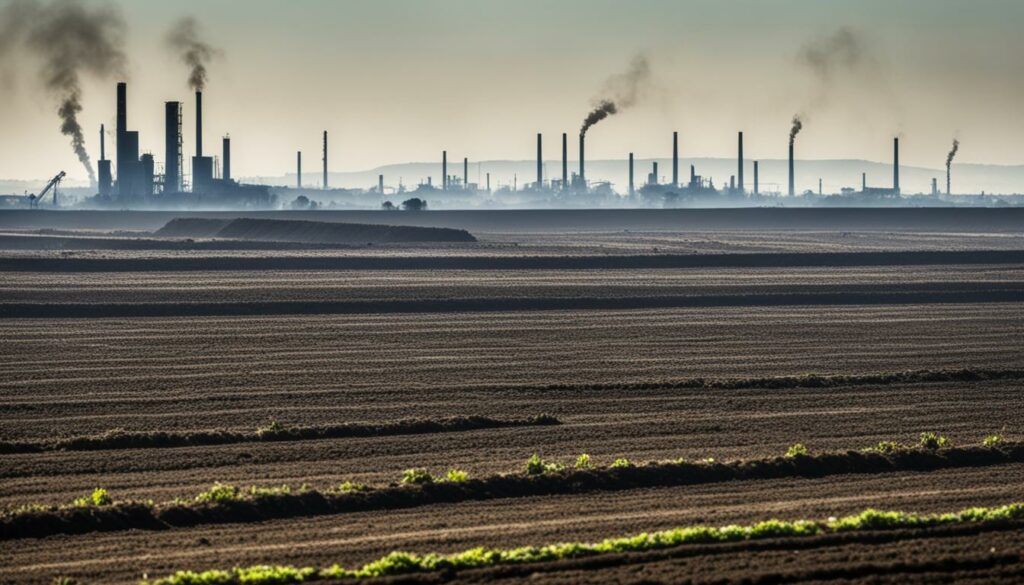
Monoculture farming does a lot of harm. Growing just one crop makes fields weak against pests and diseases. This high risk means farmers often use a lot of chemicals, which then harm the environment.
Using chemicals such as neonicotinoids and glyphosate is also bad for bees. Neonicotinoids slow down bee colony growth and mess up their ability to talk with each other. This, in turn, affects how well plants are pollinated and the overall balance of nature.
More chemicals mean fewer different plants near farms. Pollution from farming now poses the biggest threat to many fish, frogs, and birds worldwide. The annual environmental impact of industrial agriculture reaches around US$3 trillion. Our problem with farming chemicals is urgent.
| Statistic | Impact |
|---|---|
| Biodiversity estimation | 8.7 million unique species |
| Reduction of tallgrass prairies | To 1% of former range |
| Grassland conversion (2015-2016) | 2.5 million acres |
| Monarch population decline | 70% due to farmland expansion |
| Deforestation due to agriculture | 80% worldwide |
| Cost to environment | US$3 trillion annually |
Conservation tillage is key to keeping soil healthy. It doesn’t disturb the soil much. No-till, strip till, ridge till, and mulch till are some methods. They leave plant bits covering 30% of the ground. This makes soil stronger and helps stop soil erosion.
In California, about 47% of crop lands used these methods in 2010. By 2028, they aim to push this to over 50%. This is part of an effort to do better in sustainable soil management. The IPCC thinks it can also help with climate issues.
Conservation tillage means less tilling and more soil protection. It cuts down on soil erosion. It also helps lower carbon emissions. This is good for the planet. It uses 40% less tillage than before, and helps water and air stay clean. This is because it keeps the ground, particles, and nutrients where they belong.
This method is good for the environment. It keeps the soil healthy and its important properties strong. It makes farming work better. The FAO says it also saves time, effort, and fossil fuels. This makes it cheaper and better for farming in the long run.
Using conservation tillage is about making a promise to better farming. It ensures our land stays good for growing food for the future. By using these methods, we help our earth. We keep our farming land alive and well for the next generations.
Cover crops have become a key player in soil protection of late. In 2017, 15.4 million acres were sown with these crops, showing a 50% increase over five years. This rise proves that more farmers see the value in using cover crops to protect their land. As of 2017, eight states had over twice as much land covered with these crops. This shows a big step forward in sustainable farming practices.
Between 2012 and 2017, 15.2% more farms started using cover crops. This change demonstrates the clear benefits these crops offer. They boost soil health in various ways, like by upping organic matter and fertility and holding more moisture in the ground. All this makes the land better at resisting erosion and cuts down on pests. It’s a win-win situation for farmers and the environment alike.
Financial gains are also drawing farmers to cover crops. A survey found that after five years of using cover crops, farmers could expect more corn and soybeans at harvest. The benefits were even greater during the 2012 drought, with considerable jumps in yield. Though there’s an initial outlay, these cover crops pay off long term, making farming more profitable.
Moreover, cover crops play a huge role in keeping our planet healthy. They lower water pollution risks and suck CO2 out of the air. This is a big help in reducing a farm’s impact on climate change. With heavier rainfall becoming more common in the Northeastern U.S, fields are more at risk of erosion. Cover crops help counter these effects by supporting soil health even in the face of shorter fieldwork seasons. This aspect is vital for a sustainable farming future.
Biodiversity in farming means many different plant, animal, and microbe species living together. This mix helps keep nature in balance and the soil healthy.
Genetic diversity is key for strong crops and animals. It helps them fight off diseases and grow well even in tough conditions. This keeps our food supply steady.
Sustainable farming is great for wildlife. It uses fewer wild spaces, more plant and animal types, and less harmful chemicals. This keeps the land and its life diverse and healthy.
Agroecology mixes farming and ecology. It uses natural ways to help farms grow better and support more life. This keeps the farm system active and strong.
Soil microbes are tiny but vital for plants and the soil. They help plants get nutrients and stay healthy. This makes the whole farm environment thrive.
Conservation farming uses methods that protect the land and creatures. This includes not tilling too much, keeping plant leftovers, and growing extra plants. These steps help keep the land and its life diverse, and the soil strong.
Crop rotation makes the soil better and stops diseases. It makes the land healthier without using too many chemicals. It’s a big part of farming that lasts.
Places like hedgerows and ponds give many animals and plants a home. They also let creatures move around easily. This keeps the farm’s natural variety alive and healthy.
Helping the bees and other pollinators is important for farming. Choosing different flowers and using fewer chemicals keeps them safe. This also helps our crops grow well there.
Big farms can take over wild spaces and plant just one crop type. This can cause problems, like more pests, and less variety in plants and animals. Using a lot of chemicals can also hurt the environment in many ways.
Conservation tillage is gentle on the soil and helps it stay together. This way, it does not wash away. This keeps the land strong and cuts down on gases that harm the Earth.
Cover crops stop the soil from blowing away and keep it rich. They make good homes for different creatures, too. This adds to the life and health of the farm.